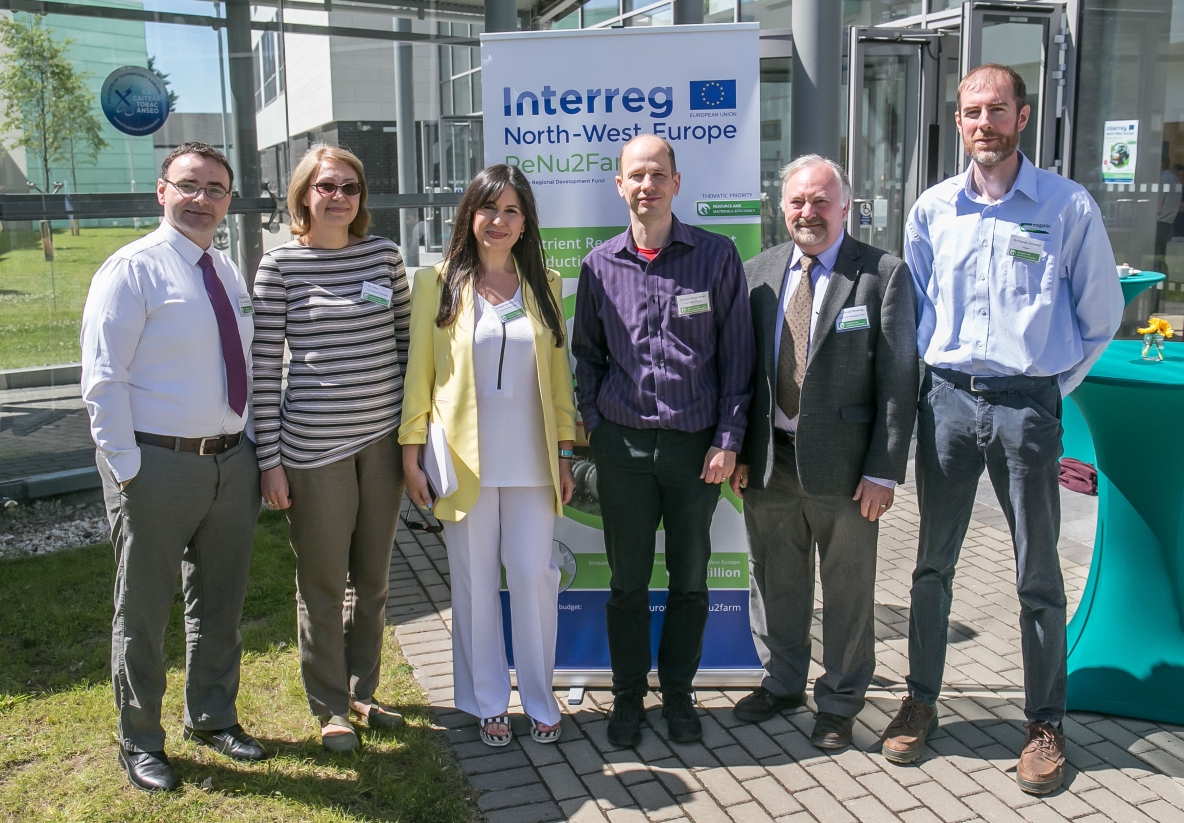
A multi-million euro EU led project with three Irish partners including the University of Limerick is aiming to increase the recycling rates for plant nutrients in the food production chain by harvesting lost nutrients from waste.
ReNu2Farm, is a University of Limerick supported Interreg Europe consortium working together to offer farmers a better solution to non-EU mined phosphorus fertilizers by harvesting nutrients from wastewater and poultry litter.
Working with fellow Irish partners at Cork Institute of Technology and Institute of Technology Carlow, Dr Achim Schmalenberger of UL is aiming to increase recycling rates for plant nutrients nitrogen (N), phosphorus (P) and potassium (K), by extracting them from waste sources to produce phosphorus rich ashes and struvites. The recycled ashes can be then spread on grassland areas in place of artificial fertilizers sourced from outside the EU.
At present, the EU is heavily dependent on the importation of artificial fertilizers in the primary food production chain, especially in the Interreg zone of Northwest Europe (NWE).
“We are researching the ability of the soil microbiota to cycle phosphorus and make it plant available. Only 20% of the phosphorus in conventional fertilizer applications are directly taken up by the plant as microbes are largely responsible for the mobilization of the remaining 80% of phosphorus from the fertilizer as well as other sources of phosphorus present in the soil,” the University of Limerick researcher explained.
Dr. Schmalenberger’s research group is investigating whether recycling-derived fertilizers affect microbial cycling of phosphorus differently, when compared to conventional fertilizers.
The €3.7 million project, which has received €2.2 million in EU funding, strives for an exchange of nutrients between Ireland and the UK, Denmark and the Netherlands and Belgium and France.
Thus far, the project has identified that in each of these country areas there are regions with both nutrient shortages and surpluses.
Nutrient-surplus regions in NWE include the Netherlands, Flanders (Belgium), Bretagne (France) and Ireland, while Northern France, Wallonia in Belgium, the East of England and Ireland all have the potential to replace artificial fertilisers due to their high usage.
Dr Schmalenberger and his fellow European researchers are investigating the current situation on fertilizer usage, the regional status on nutrients and technologies, while also deploying the technologies in practice for both the production and upcycling of products from recycled nutrients.
Waste such as sewage sludge, food wastes and manure will be recycled and treated so as to harvest nutrient rich ash, as the scientists also consider the possible market barriers before adapting the products to more closely match the needs of users.
UL’s Dr Schmalenberger, along with the project’s Irish partners, will host a grassland field trial in Johnstown Castle, Wexford, as part of the Teagasc DairyBEEF2019 open day on May 21 next.
“We will showcase how phosphorus fertilizers made from rock phosphate that is mined outside Europe can be replaced,” he explained.
An assessment of the economic market value of the project and its grasslands results will also help determine the level of interest amongst stakeholders for the recycled products and Dr Schmalenberger said that the collected knowledge and techniques are being fed back to the stakeholders and will help overcome the knowledge gap amongst farmers.
In addressing this, the long-term goal of the project is to see farmers being able to replace two percent of the artificial fertilizers (-108,000 tonnes N, -8,000 tonnes P, -120,000 tonnes K) with recycled nutrients within five years, and six percent (-324,000 tonnes N, -24,000 tonnes P, -360,000 tonnes K) after ten years.
See more here.